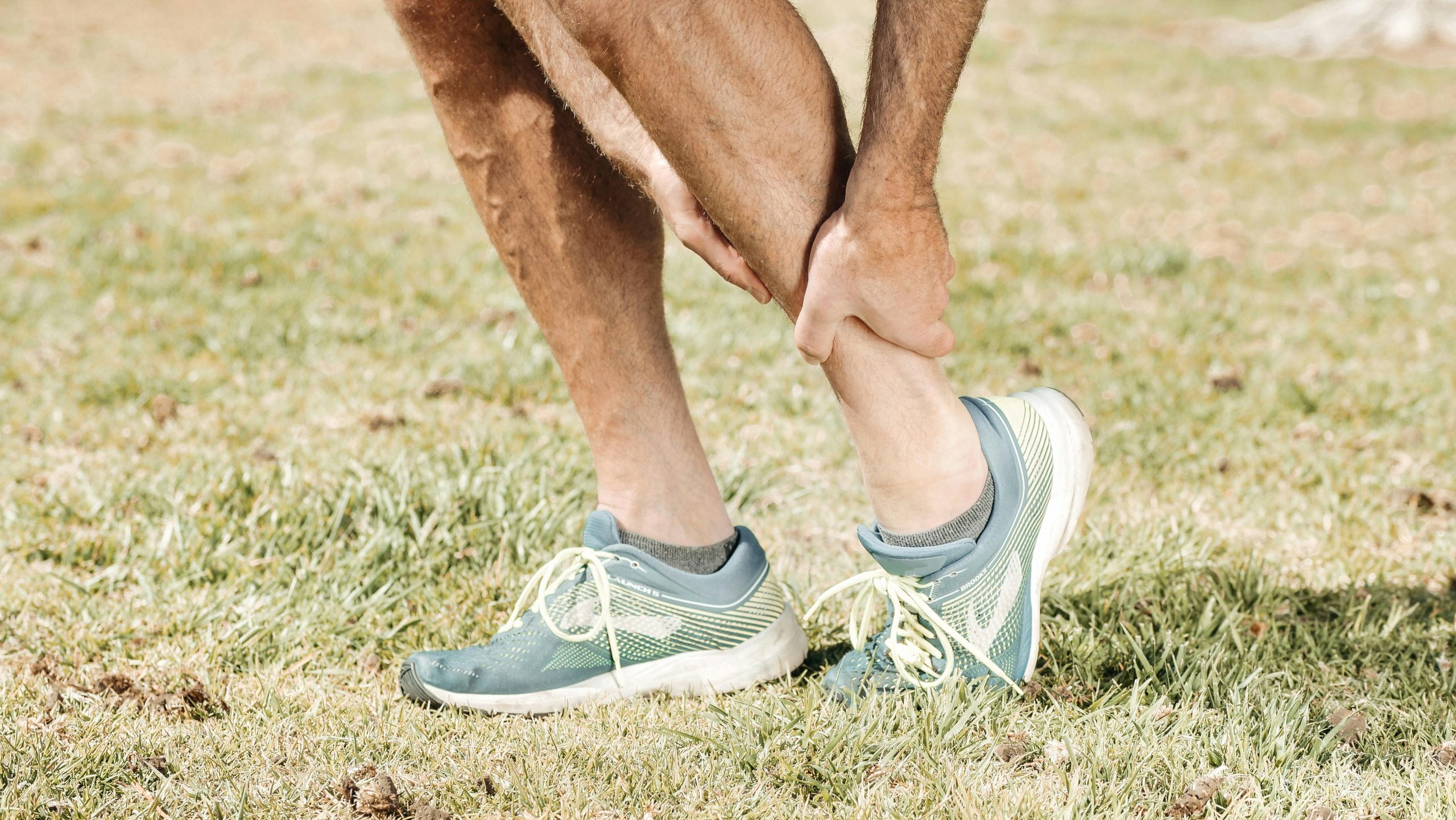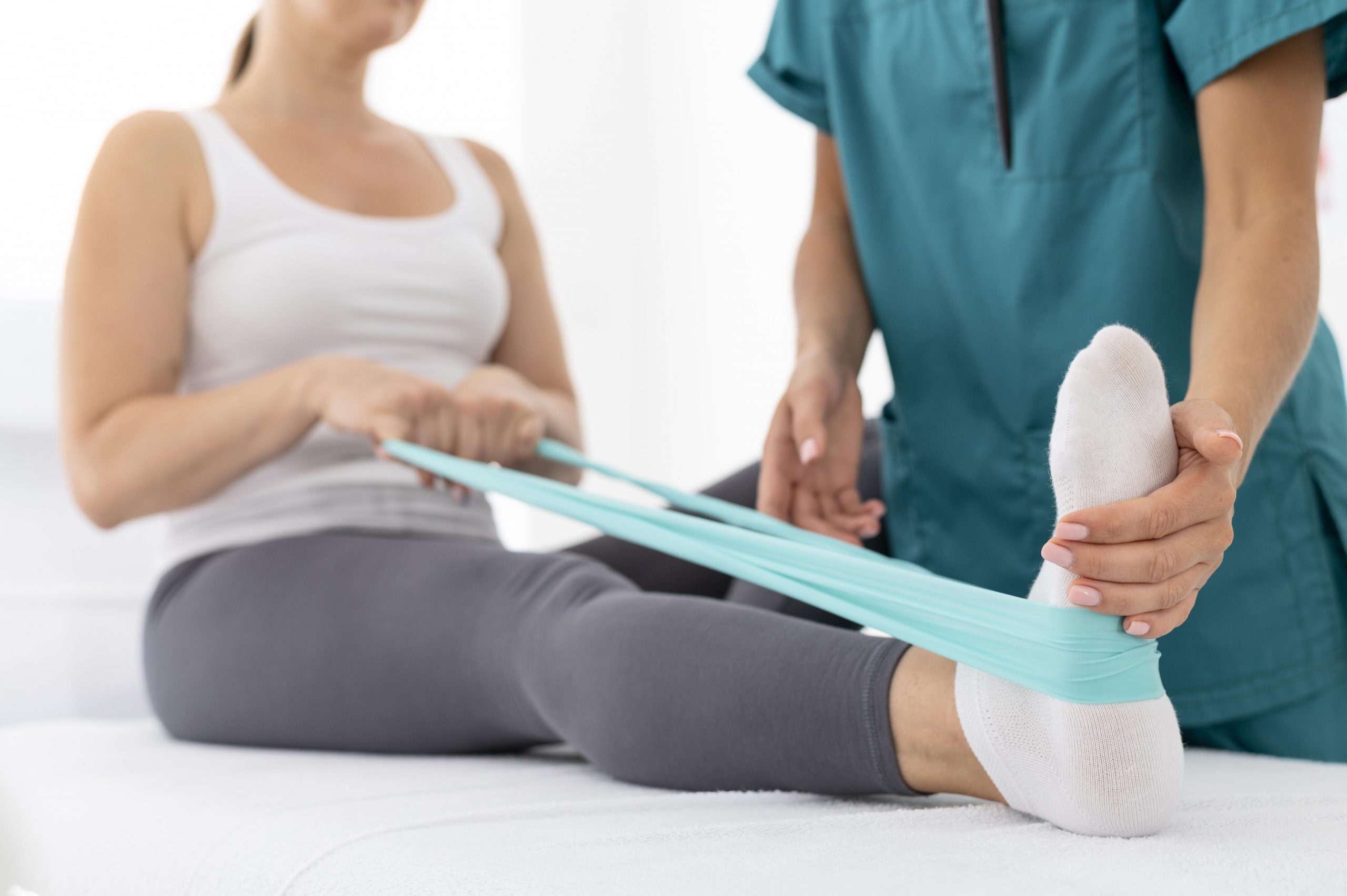If you’re an athlete dealing with a high ankle sprain, one of your first questions is probably: how long will I be out? Unlike the more common low ankle sprain, a high ankle sprain often takes longer to heal—and that recovery time can vary depending on the severity of the injury, the sport you play, and how well you stick to a rehab plan.
In this guide, we’ll break down high ankle sprain recovery time week by week, so you know what to expect and how to support your body as it heals.
What Is a High Ankle Sprain?

Before we get into the timeline, it’s important to understand the injury itself.
A high ankle sprain, also called a syndesmotic sprain, involves damage to the ligaments that connect the tibia and fibula—the two main bones of your lower leg. These ligaments are located above the ankle joint, which makes the injury more complex and slower to heal than a typical ankle sprain.
It’s also one of the injuries that can be harder to spot early, especially when athletes are trying to distinguish between a sprained ankle vs broken ankle. Pain above the ankle, difficulty walking, and swelling can point to either one, so proper assessment is key.
This kind of sprain often happens in sports that involve:
- Quick cutting or pivoting (e.g., football, soccer, basketball)
- High-impact collisions (e.g., rugby, hockey)
- Intense ankle dorsiflexion or external rotation (e.g., wrestling)
How Long Is High Ankle Sprain Recovery Time?
The average recovery time can range from 4 to 12+ weeks, depending on the severity:
- Mild (Grade I): 4–6 weeks
- Moderate (Grade II): 6–10 weeks
- Severe (Grade III or with fracture): 10–16 weeks or longer (may require surgery)
Let’s break it down by week so you can track your recovery more closely.
Week 1–2: Immediate Care and Protection
What to Expect:
- Pain and swelling just above the ankle
- Difficulty putting weight on the leg
- Limited range of motion
Key Goals:
- Reduce inflammation
- Prevent further damage
- Begin early healing
Action Plan:
- R.I.C.E. (Rest, Ice, Compression, Elevation)
- Immobilization: Use a boot or brace as advised
- Crutches: Avoid weight-bearing if needed
- Anti-inflammatory meds: Ibuprofen or as prescribed
Week 3–4: Gentle Movement and Assessment
What to Expect:
- Swelling begins to decrease
- Pain still present with motion
- Possible stiffness and weakness
Key Goals:
- Restore range of motion
- Begin basic rehab
- Reassess severity (especially if progress is slow)
Action Plan:
- Physical therapy begins: Light range-of-motion exercises
- Isometric strengthening: Calf, foot, and toe muscles
- Balance drills: Gentle weight-shifting or single-leg stands
- Switch to supportive shoes or a lace-up brace
Red Flag: If you still can’t walk without pain or your range of motion is severely limited, it’s time to check for a fracture or more severe damage.
Week 5–6: Building Strength and Mobility

What to Expect:
- Gradual improvement in walking
- Less tenderness and swelling
- Ability to begin light functional activities
Key Goals:
- Rebuild strength and mobility
- Begin low-impact activities
- Continue joint protection
Action Plan:
- Ankle mobility drills: Circles, toe/heel walks
- Theraband resistance exercises
- Pool therapy or biking: Non-impact conditioning
- Taping or bracing for light activities
If you’re an athlete in-season, your rehab specialist may also begin sport-specific motion drills at reduced intensity.
Week 7–8: Return to Controlled Sport Movements
What to Expect:
- Ability to jog lightly
- Increased strength and stability
- Confidence starting to return
Key Goals:
- Return to functional strength
- Begin dynamic drills
- Re-establish proprioception (body awareness)
Action Plan:
- Jog-walk intervals
- Lateral shuffles and hops (progressively increased)
- Agility ladder drills
- Plyometrics under supervision
- Continue PT twice weekly or as advised
Caution: You may feel ready, but re-injury is still a real risk. Stick to the plan and communicate with your rehab team.
Week 9–12: Return to Sport (With Caution)
What to Expect:
- Confidence in cuts, pivots, and landing mechanics
- Nearly full range of motion
- Minimal pain or swelling post-activity
Key Goals:
- Prepare for full return to play
- Ensure durability under sport conditions
- Avoid compensation injuries
Action Plan:
- Sport-specific conditioning (e.g., sprint drills, change of direction)
- Scrimmage or controlled gameplay
- Functional movement testing (e.g., single-leg hop tests)
- Ongoing bracing or taping during practices/games
You may be cleared for full competition by the end of week 12 if your rehab has gone smoothly.
Beyond Week 12: Full Return or Extended Recovery?
Most moderate to mild sprains resolve by this point—but severe sprains (especially those needing surgery) can stretch into 4–6 months or more.
Keep an Eye On:
- Lingering pain during sport
- Swelling after workouts
- Instability or fear of re-injury
Tip: Don’t ignore those signals. You may need a longer-term rehab plan, gait re-training, or even a second evaluation.
FAQs: High Ankle Sprain Recovery Time
How can I tell if my high ankle sprain is severe?
Signs of a severe sprain include:
- Inability to walk even days after the injury
- Pain with squeezing the calf (syndesmosis test)
- Tenderness 2–3 inches above the ankle
- Visible widening of the ankle joint on imaging
Always consult a sports medicine doctor if in doubt.
Can I speed up recovery?
To recover faster without risking re-injury:
- Follow your PT plan closely
- Eat a nutrient-dense diet rich in protein, vitamin C, and collagen
- Use modalities like massage, cryotherapy, or electrical stimulation
- Adopt a holistic approach to recovery, which includes rest, nutrition, and lifestyle habits
- Avoid returning too early—setbacks prolong the total recovery time
Will I need surgery?
Surgery is only required in severe cases—typically when:
- The ligament is completely torn
- The tibia and fibula are unstable
- There’s a fracture involved
- The athlete has high performance demands and needs long-term joint stability
Closing Thoughts: Be Patient, Stay Consistent
A high ankle sprain is frustrating—especially if you’re in the middle of a season or training for an event. But trying to rush back too soon can lead to chronic instability or repeated injury, sidelining you even longer.
By understanding the week-by-week timeline, working with rehab pros, and staying consistent, you’ll give yourself the best shot at coming back stronger and smarter.

